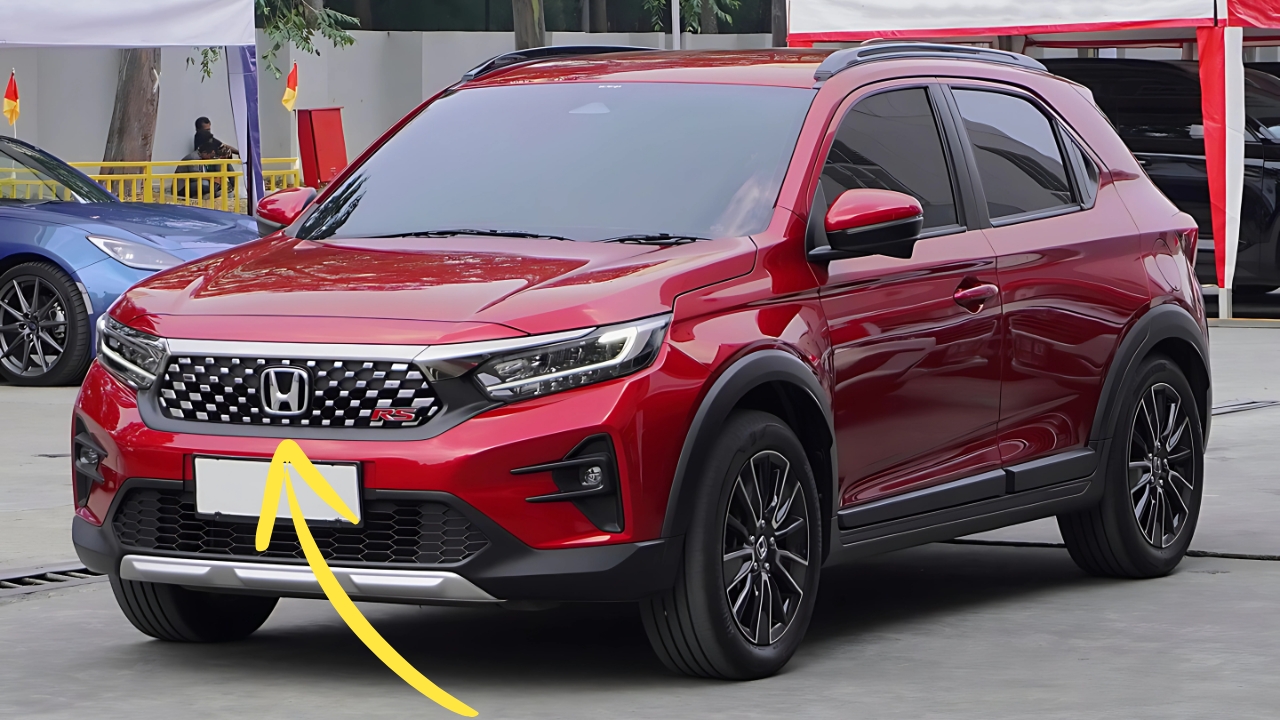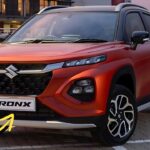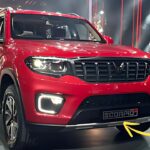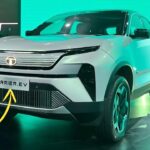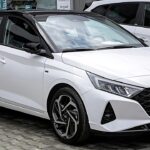Honda WRV SUV: In the increasingly crowded landscape of compact crossovers, manufacturers face the challenging task of differentiating their offerings while still meeting the fundamental expectations of the segment.
The Honda WR-V represents a particularly interesting case study in this balancing act, blending elements of multiple vehicle categories to create something that defies easy classification.
Having spent three weeks with this distinctive compact SUV across varied driving conditions, I’ve developed a nuanced appreciation for its particular approach to urban mobility.
Market Context: Understanding the WR-V’s Position
To properly evaluate the WR-V, one must first understand its somewhat unique market positioning. Developed primarily for emerging markets and later introduced to select developed regions, the WR-V (which Honda says stands for “Winsome Runabout Vehicle”) occupies the space between traditional hatchbacks and more rugged compact SUVs.
This places it in competition with vehicles ranging from raised hatchbacks like the Maruti Suzuki Ignis to more conventional compact crossovers like the Hyundai Venue and Kia Sonet.
This positioning reflects Honda’s recognition of evolving urban mobility needs, particularly in congested metropolitan areas where traditional SUV dimensions prove impractical, yet buyers still desire elevated seating positions and visual presence.
The WR-V attempts to deliver these seemingly contradictory attributes through thoughtful design and engineering choices rather than mere marketing exercises.
Design Philosophy: Purposeful Distinction
The WR-V’s exterior design successfully communicates its dual-nature personality. While clearly related to the Jazz/Fit hatchback upon which it’s based, significant alterations create a more rugged, purposeful appearance.
The front fascia features a distinctive chrome grille bar that visually connects the sleek headlamps, while the more aggressively sculpted bumper with silver skid plate elements suggests off-road capability without making implausible promises.
In profile, the WR-V’s 25mm height increase over the Jazz becomes apparent, as does the more pronounced wheel arch cladding that houses 16-inch alloy wheels.
These elements, combined with roof rails and a slightly increased length, transform the familiar silhouette into something more substantial and adventure-oriented.
The 188mm ground clearance – a meaningful increase over the donor hatchback – provides tangible benefits when navigating poor road surfaces rather than serving merely as a marketing specification.
The rear treatment continues the rugged theme with vertically oriented taillamps and additional cladding, creating visual continuity with the front and side designs.
Throughout the exterior, there’s a refreshing honesty about what this vehicle is and isn’t – no excessive chrome suggesting luxury pretensions, no overly aggressive styling elements implying performance capabilities beyond its modest powertrain.
Interior Experience: Practical Innovation
Step inside the WR-V, and Honda’s expertise in space utilization becomes immediately apparent. Despite compact external dimensions (3,999mm length, 1,734mm width, 1,601mm height), the cabin feels remarkably spacious – a testament to thoughtful packaging rather than dimensional excess.
The elevated seating position provides the commanding view many crossover buyers seek, while large windows create an airy ambiance enhanced by the available sunroof in higher trims.
The dashboard layout prioritizes functionality without feeling austere. Physical controls for climate functions offer intuitive operation without diving through touchscreen menus – a practical approach that acknowledges the realities of driving on imperfect roads.
Material quality exceeds expectations for this segment, with soft-touch surfaces at key contact points and consistent panel gaps throughout.
The 7-inch touchscreen infotainment system supports both Android Auto and Apple CarPlay, providing essential connectivity without unnecessary complexity.
Seating comfort deserves particular mention, with front seats that provide surprising support during longer journeys. The rear bench accommodates three adults in reasonable comfort, with generous headroom despite the compact external dimensions.
The nearly flat floor enhances center-position comfort – a seemingly minor detail that makes significant difference during family journeys.
Perhaps the WR-V’s most impressive interior feature is its flexible storage solutions. The 363-liter boot expands to 881 liters with the rear seats folded, while Honda’s ingenious “Magic Seats” allow for multiple configurations to accommodate unusual cargo.
During my testing period, this versatility proved invaluable when transporting everything from weekly groceries to unexpectedly large furniture items – versatility that belies the vehicle’s compact footprint.
Driving Dynamics: Urban Adaptability
The WR-V’s driving character reflects its urban-focused design intent. Powered by a naturally aspirated 1.5-liter i-VTEC petrol engine producing 121 horsepower and 145 Nm of torque, performance proves adequate rather than exhilarating.
The CVT transmission in my test vehicle prioritizes efficiency over engagement, though the available paddle shifters provide some control over simulated gear ratios when desired.
While straight-line acceleration won’t impress performance enthusiasts, the engine’s linear power delivery and reasonable refinement suit the vehicle’s practical nature.
More impressive is the suspension tuning, which demonstrates Honda’s engineering thoughtfulness. The slightly increased ride height and retuned dampers absorb urban imperfections with remarkable composure, transforming potentially jarring impacts into muted thumps that rarely disturb cabin serenity.
Steering response strikes an appropriate balance between ease and engagement. Light enough for easy maneuverability in tight parking situations yet with sufficient feedback to place the car confidently at higher speeds.
The 5.3-meter turning radius proves particularly valuable in congested urban environments, transforming potentially frustrating three-point turns into simple maneuvers.
Highway stability exceeds what the tall stance might suggest, with minimal body roll during lane changes and composed behavior even during sudden avoidance maneuvers.
While not marketed as an off-road vehicle, the increased ground clearance and thoughtful approach and departure angles allowed the WR-V to navigate moderate unpaved roads during our testing without drama – capability that enhances the vehicle’s practical versatility without overreaching its intended use case.
Efficiency Considerations: Pragmatic Performance
Fuel economy often ranks among the primary concerns for crossover buyers, and the WR-V delivers respectable if not class-leading results.
During my mixed-condition testing, the vehicle consistently returned 14-15 km/l (approximately 33-35 mpg), figures that represent reasonable efficiency given the practical versatility on offer. The 40-liter fuel tank provides adequate range for typical usage patterns, requiring refueling approximately every 550-600 kilometers depending on driving conditions.
The CVT transmission, while sometimes criticized for its driving dynamics, demonstrates its efficiency advantages in real-world conditions, particularly in stop-and-go traffic where it maintains optimal engine operation without the hunting sometimes experienced with conventional automatics.
The available Eco mode noticeably dulls throttle response but can improve economy by 5-8% during urban driving – a worthwhile tradeoff for those prioritizing efficiency over responsiveness.
Safety Architecture: Foundational Protection
Safety features represent an increasingly important consideration in this segment, and the WR-V incorporates Honda’s contemporary approach to occupant protection.
The ACE (Advanced Compatibility Engineering) body structure distributes crash energy to enhance occupant protection, while the standard complement of six airbags provides comprehensive coverage in multiple impact scenarios.
Active safety systems include vehicle stability assist, hill start assist, and rear parking sensors with camera guidance, though the WR-V lacks the more advanced driver assistance systems found in some competitors.
ABS with electronic brakeforce distribution ensures predictable stopping performance even in challenging conditions, while the standard-fit tire pressure monitoring system provides early warning of potential issues.
Ownership Proposition: Value Beyond Purchase
The WR-V’s ownership proposition extends beyond its initial purchase price through thoughtful attention to long-term costs.
Service intervals of 10,000 kilometers strike a reasonable balance between maintenance needs and owner convenience, while Honda’s reputation for mechanical reliability suggests minimal unscheduled maintenance requirements throughout normal ownership cycles.
Insurance classifications reflect the vehicle’s sensible performance and repair costs, while strong resale values – a traditional Honda strength – enhance the total cost of ownership equation.
Parts availability remains excellent across most markets, though costs can sometimes exceed more mainstream competitors – the price of Honda’s generally superior engineering and material quality.
Honda WRV SUV: Thoughtful Compromise
The Honda WR-V ultimately succeeds through clear understanding of its target audience and judicious feature prioritization.
Rather than attempting to excel across all potential criteria or imitate more specialized vehicles, it delivers a balanced experience that emphasizes practical versatility, driving refinement, and space efficiency – elements that enhance daily livability more than impressive specification sheets.
For urban dwellers seeking practical transportation with moderate all-weather capability and occasional light off-road use, the WR-V offers a compelling proposition that focuses on genuine user needs rather than marketing-driven excess.
In challenging conventional category boundaries and prioritizing functional excellence over superficial attributes, Honda has created a vehicle that may not dominate comparison tests but delivers meaningful real-world utility to those who value thoughtful engineering over fashion-driven design.
In a market segment increasingly defined by style over substance, the WR-V’s focus on practical innovation represents a refreshingly honest approach to contemporary mobility challenges – proving that thoughtful compromise often creates more genuinely useful products than single-minded specialization.
